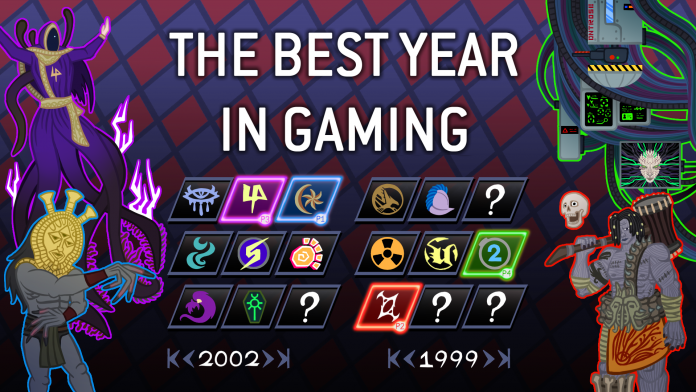Last year’s stacked lineup of games for the Game Awards had us thinking: What was the best year in gaming? As part of our series on determining gaming’s best year, we’re putting together an article on each year, charting the major releases and developments of the year, and talking about both their impact and what made them great.

The Year: 2016
Ahhh, 2016. The year everything was great and we had so many good games and nothing bad happened at all! America definitely didn’t go absolutely apeshit and elect the worst president of our history and Britain definitely didn’t pre-empt that by gammoning out of control and doing a Brexit. I can’t remember either of those things happening because we got Fallout 4, Uncharted 4, Pokemon Go, and personal favorites Sharp Practice and The Walking Dead: All Out War.
TheChirurgeon: 2016 is an interesting year when it comes to gaming and tech trends. Twitch streaming had really begun to spike in 2015 and continued to grow in 2016, though it wouldn’t properly explode until 2020 with the pandemic. What did start showing up in 2016 was Twitch integration in games proper, both in the games themselves and through external promotion.
On the console side of things, Sony launched the PlayStation VR in October 2016, a VR headset compatible with their PS4 game console. More than 500 games would end up being made with support for the headset, though few of these would be considered triple A titles – the most notable of them was Resident Evil 7: Biohazard. Ultimately, VR was a failure for Sony, and they’d announce the end of their VR support in early 2024.
The PlayStation 4 Pro Kicks Off a Console Upgrade Trend
In terms of other trends we don’t love, Sony released the PlayStation 4 Pro in September 2016, followed by Microsoft releasing the Xbox One X in November. These were updated versions of the eighth generation consoles sporting more powerful hardware and storage space, capable of rendering games at 4K resolution and improving performance on older games. This would set off a trend of console upgrades and split hardware capabilities, offering consumers more power but at the cost of eroding the biggest advantage consoles had over PCs: having only a single set of hardware specs to worry about.
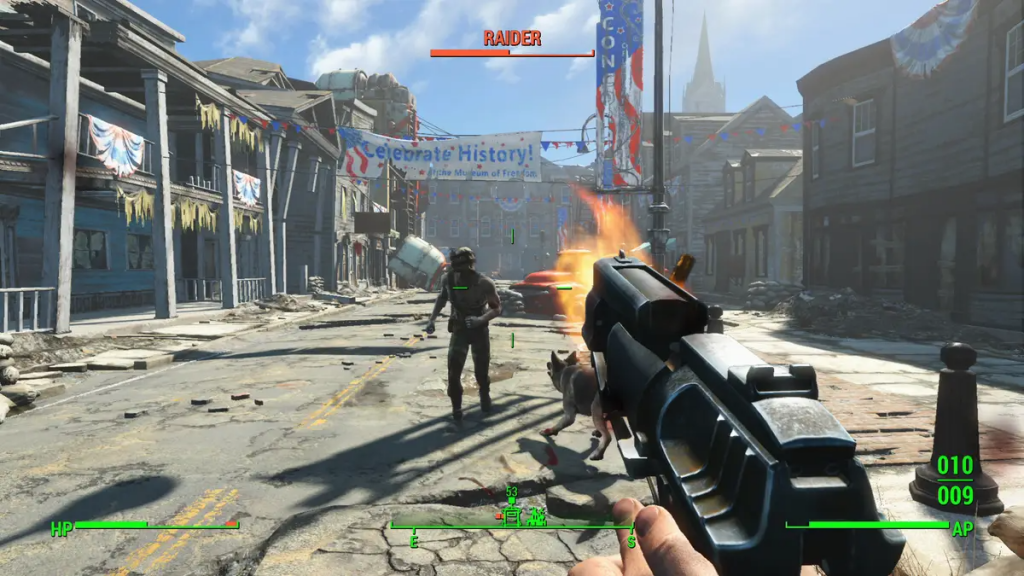
Fallout 4
One of the most beloved gaming series ever returned in 2016 with a new (well-reviewed, but somewhat divisive) blockbuster entry. What’s new about it? Basebuilding was introduced with players able to take over local buildings, gas stations, etc. and make it their own. The basebuilding was very extensive, including defensive systems, food, water, etc. You can actually build multiple settlements and connect them via trade routes, creating a vibrant post-apocalypse community across New England.
Fallout 4 was the first one I played – despite being a lover of all things post-apocalypse, I just hadn’t played the previous ones for some reason. I really enjoyed it; even the story, which I think was the most divisive part of the game for some Fallout vets. Fallout 4 set-up Bethesda to create Fallout 76, a huge failure on launch that was eventually turned into a very fun MMO game.
Jonathan Bernhardt: Oh boy. “Divisive” is one way to put it. Veterans of the Fallout series were not particularly pleased with Fallout 4, but they also weren’t particularly pleased with Fallout 3, and to be quite frank, veterans of the Fallout series aren’t the market that Bethesda is targeting or servicing with their resurrection of the IP. Fallout 4 was important in the context of The Bethesda Game, which operates very much the same regardless of which IP’s face it is wearing: A sandbox of pure player empowerment where systems are streamlined to accentuate player agency and stories and choices are secondary to player experiences.
In The Bethesda Game, choices are relegated to illusions at best (and in Fallout 4, they’re not particularly skillful illusions, either); a meaningful choice by its nature prevents you from seeing what would have happened on the path you didn’t travel, after all, and Bethesda is not in the business of hiding content. So instead of having a great (or by the end, even really all that coherent or interesting) story, the game leaned very, very heavily into literal and figurative world-building, with lots of stuff to see and many, many outposts to build, and was a massive success on its own terms. This would be the last real unqualified success Bethesda would have with this approach…but that’s not 2016’s problem.

Uncharted 4
Uncharted is probably my favorite AAA game series (that isn’t NBA) so I’m a bit biased – but this series made me a PlayStation fanboy after being an Xbox nerd since the original Xbox released. Uncharted 4 is the big bow on the series, tying up the story of Nathan Drake and Elena Fisher. We learn a lot about Nathan’s past with his brother and their time in an orphanage as well as his future with Elena. Critics praised the environments, soundtrack, and character development; the game was nominated for and won GOTY awards. While there was a standalone game after it, The Lost Legacy, Uncharted 4 is the ultimate fitting (thief’s) end to the Nathan Drake story.

Arkham Horror
By 2016 Fantasy Flight Games was thoroughly entrenched in the Living Card Game market, having done Netrunner, Lord of the Rings, Star Wars, Warhammer Invasion, and many others. Arkham Horror was somewhat similar to LOTR in that it was a cooperative campaign that allowed players to continue the story through multiple playthroughs, progressing their character as they went.
Players choose an investigator then create a deck for them, with most investigators being assigned a class: Guardian, Mystic, Rogue, Seeker, or Survivor. As you go through the campaign, your investigator takes mental or physical trauma, possibly eliminating you from the game – your team could still win, but you’ll have more challenges in the next campaign game as you go along.
FFG has printed over seventy expansions for this LCG. They’d come in a Deluxe pack with 60 cards and two scenarios, then six Mythos packs with 24 cards and one scenario. Later on, the cards would be collected in Investigator and Campaign expansions that had everything in them. It was a very prolific LCG for FFG, and good or people who really wanted to collect and play (it even had in-store organized play) a big Cthulhu card game.

Sharp Practice
One of Goonhammer Historicals’ favorite games, Sharp Practice is a large skirmish ruleset that simulates small engagements during the black powder time period. Players can expect to field 40-60 minis a side, making this ruleset really affordable in both money and time spent painting. This is technically the second edition of Sharp Practice; the first was released early in the 2000s and laid a lot of the groundwork for the system.
What differentiates Sharp Practice from other games of the same conflict period is the TooFatLardies focus on ‘friction’ or fog of war. If you’re coming from a game like Warhammer, Flames of War, or X-Wing, you’re used to having your troops do what you want them to do when you want them to. You have an omniscient battlefield view and you have all the information. With Sharp Practice, you’ll be able to influence your troops with resources and command decisions but just like in a real war, they won’t always be where you want them when you want them.
The other main differentiator and the thing that makes Sharp Practice so accessible for new historical players is that the model count is lower than lots of games of this time period; you’re not using large brigades or divisions and doing grand sweeping tactics. It is based on small units which makes it a lot easier to grasp and a lot easier to paint for. It also gives you some flexibility in paint – you can choose to paint different units and not have to paint 100 of the same uniform if you wish.
With force lists available for almost any conflict from 1740-1880, Sharp Practice is the best game on the market for black powder-era large skirmishes. Its release in 2016 was a revelation for not only me, but the historical gaming market as a whole.
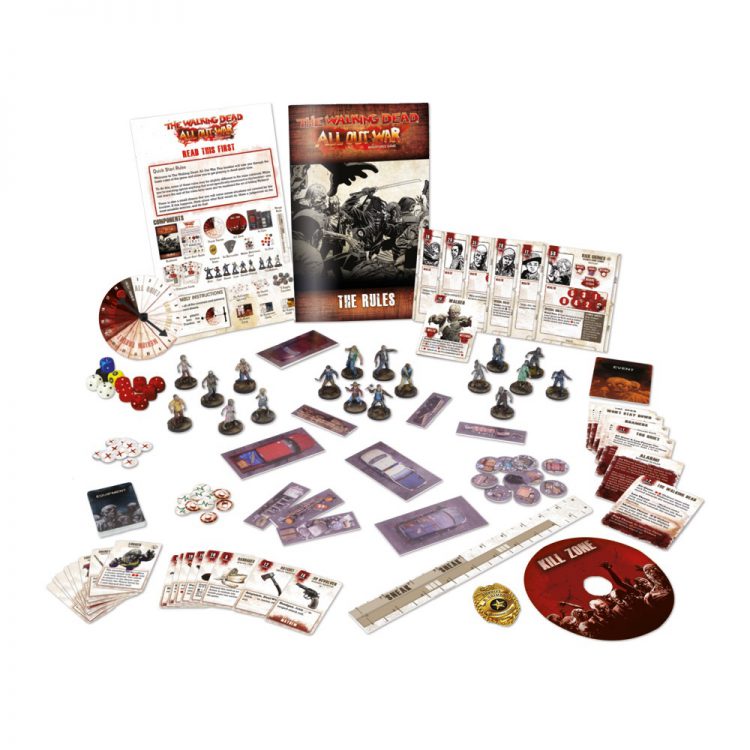
The Walking Dead: All Out War
Based on the hit comic book series that started in 2003, The Walking Dead: All Out War is a warband-sized PVP or co-op tabletop game that follows the story of the comic books with scenarios for each big story encounter. This was one of Mantic’s best Kickstarters, raising around $700,000 just on Kickstarter before the pledge manager.
Mantic provided hard plastic, highly-detailed minis that looked just like the characters in the comic book (no Daryl, he’s from TV) and eventually included characters from the Telltale Walking Dead video game. The game was well-supported, boasting six different waves. The game was sunset in 2022 due to licensing but came back from the dead in 2024, likely due to the playerbase clamoring for Mantic to finish the story.
The game plays very well in a PVP setting, utilizing the walkers to cause issues for both groups as they fight over objectives and story scenarios. I usually play the game cooperatively with my kids, as they love putting down walkers. Mantic provided solo play rules and cards that support it with the Prelude to Woodbury Expansion.
The Walking Dead: All Out War is not only a great licensed game – it’s a great warband-sized game of any genre with a ton of depth to it and lots of support from Mantic. It’s great to see Mantic finishing the story in 2024; I hope the support is there to continue on into the video game.

Overwatch
TheChirurgeon: Blizzard entered the multiplayer battle arena space with this 2016 first-person shooter, which featured a large cast of colorful heroes, each with their own abilities and powers, taking the character and class dynamics of Team Fortress 2 to a whole new level. Overwatch is a very solid first-person shooter with some great abilities and team dynamics, and was strong enough to drive a billion dollars in sales and the creation of an entire professional gaming league. The real triumph of Overwatch however was in its art and character design; Blizzard created a large world full of colorful characters and interesting dynamics, and from there developed a diverse cast of incredibly memorable (and marketable) characters. In a brilliant move, Blizzard marketed the game through a series of wonderfully done animated shorts which introduced the characters and the world in a way that really drew players in. Even if you don’t think Overwatch is one of the best games of the past decade – and it is – it’s one of the most important.
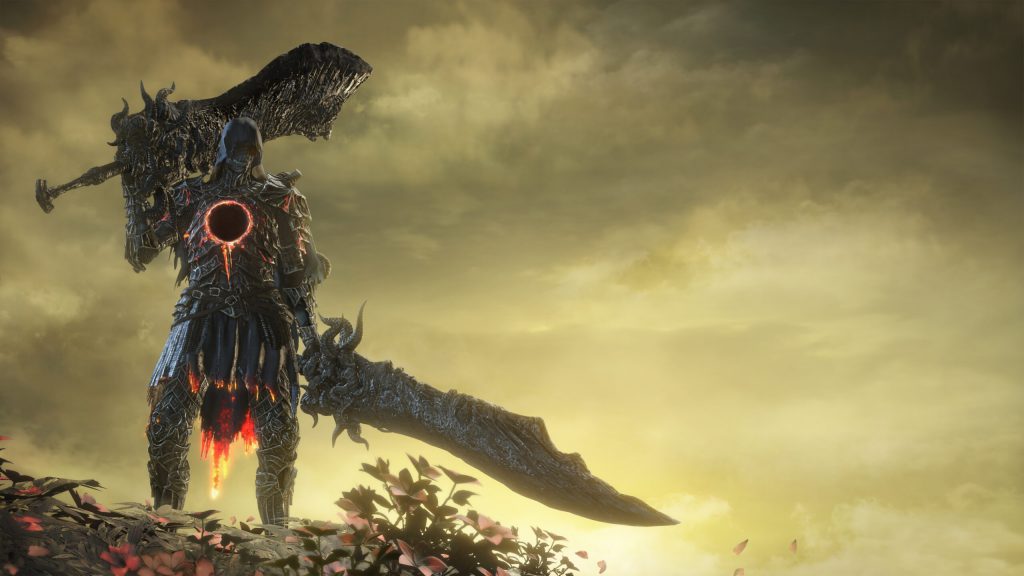
Dark Souls 3 Brings the End with a Bang
Marcy: The third entry in trilogies always seems to be tasked with the unenvious position of closing out the franchise that came before it. Dark Souls 3 is such a title tasked with not just carrying the weight of Dark Souls and Dark Souls 2’s legacy, but also grappling with the fact that it was, intentionally or not, the follow-up game to 2015’s Bloodborne, and also the title competing with the range of “Soulslike” games that had begun to pop up across the market. Like a true ruler returning to their throne, Dark Souls 3 proved that the reason games called themselves “Soulslike” is because they were trying to be him, and forgot Dark Souls already was him, as the game blew into the market like a whirlwind and sold like gangbusters.
The legacy of Dark Souls 2’s (incorrect) negative reception by a lot of fans made Dark Souls 3’s need to go “bigger and better” even more pressing in the wake of Bloodborne, and there are a lot of ways in which Dark Souls 3 is a combination of many of the things that the previous games had done and succeeded at doing, experimenting with new ways to better achieve those things and keep the dark fantasy style gameplay interesting and refreshing. Weapon arts were the newest gameplay mechanic to add to combat, taking cues from the Bloodborne switch weapons and their unique movesets and abilities, while Covenants were expanded in ways that didn’t quite work as intended, but still tried to provide new ways to play with or against other players (The Mound Makers, a new ‘neutral’ covenant, never really worked correctly, and most players would miss the covenant completely because an early boss would crush the covenant giver to death. Oops) and continue Dark Souls’s trend of finding tenuous connections with other people as a core thread of the game’s ethos.
Dark Souls 3 also had to grapple with the unfathomably large shadow the previous games had erected over it. Not only were the usual obfuscated lore and drip feeds of storyline expected, but there seemed to be a need for Dark Souls 3 to ‘finish’ the storyline of a series of games that really didn’t have much to do with one another except in the heads of fans. Dark Souls 3 features numerous callbacks, homages, and other odd hints that attempt to connect it into a timeline of the first two games, itself telling a story about the end of all things at the end of all things; the knight on the cover turns out to be “You,” in the sense they are the character from the original Dark Souls, and your Dark Souls 3 character is tasked with ending their legacy before the world itself comes to a final close. It works, more often than it does not, with tight gameplay that all of the Souls games have.
Perhaps the most interesting legacy of Dark Souls 3 is how it sets the stage for Elden Ring, however: It both proved that there was likely very little left to mine in the “Dark Souls” universe, a world that three games in had already become mined and theorized and explored to death, but it also revealed some of the weaknesses in the genre that the open world of Elden Ring would seek to challenge. But as far as the end of the Dark Souls franchise, Dark Souls 3 served as an exceptionally solid game burdened by legacies and expectations, coming into its own as a show of what the final vision of “Dark Souls” could and could not be.

Pokemon GO
TheChirurgeon: Released in the summer of 2016, Niantic’s second augmented reality game was a massive hit on arrival. Pokemon GO is a game which wonderfully nails the excitement and feeling of exploring the world and capturing Pokemon and battling with a team. As an AR game, Pokemon GO has you pick a starter pokemon from the classic trio (though there’s a fun secret way to start with a Pikachu), then wander the real world in search of monsters to capture. Pokemon spawn in real life locations and can be caught using pokeballs you collect by spinning pokestops – special icons on key locations in the real world, typically landmarks, stores, or other important locations. It’s an addictive game and while it’s not as popular as it used to be the game still has a passionate following. It’s also just great to have a video game give you an excuse to go outside and play.

Doom 2016
TheChirurgeon: Id software dropped Doom 3 in 2004 to massive critical and commercial success, which was followed up with a pretty popular movie, and then… nothing. We got an announcement in 2008 about a fourth game and then after multiple years of restarts Doom finally released as a reboot of the franchise in 2016. And it was freakin’ awesome. The 2016 iteration of Doom isn’t complicated; it’s a run-and-gun first-person shooter with enough of a story to keep things interesting as you battle your way through Mars and the demon-infested Hellworld. It’s not incredibly innovative, just a total blast to play.
Jonathan Bernhardt: I actually disagree a bit about it not being innovative; “incredibly” might be going a bit far, but the extremely tight gameplay loop Doom delivers with regards to the Chainsaw, glory kills, and resource collection — especially with the focus on making how you kill enemies an integral part of your overall strategy by gating your access to ammo, armor, and health — was a huge standout in the market at the time and would lead to a sequel, Doom Eternal, that is in many ways actually a puzzle game rather than a pure frenetic muscle-twitch FPS experience.
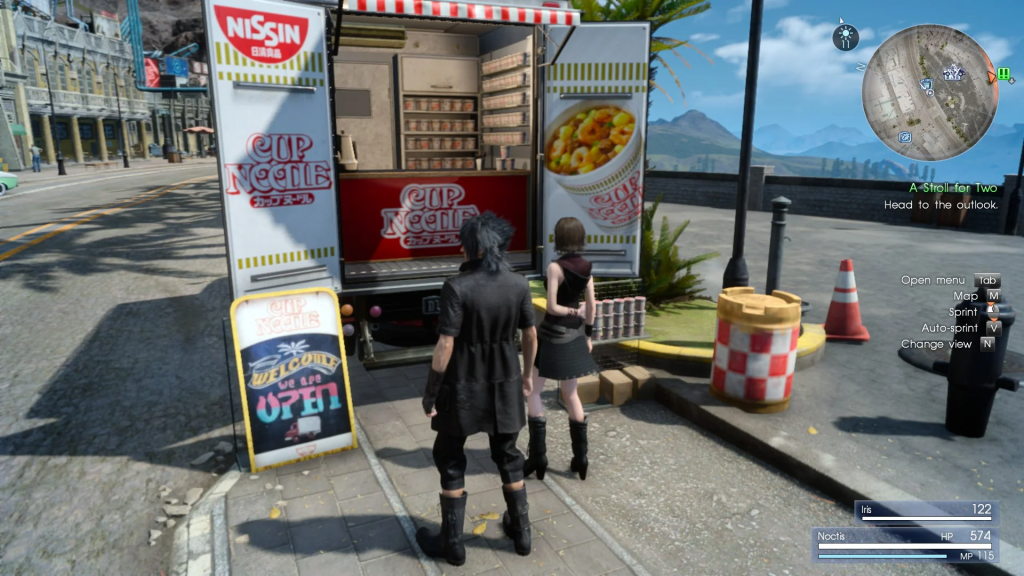
Final Fantasy XV
TheChirurgeon: Square’s Handsome Boy Road Trip Simulator doesn’t deserve most of the criticism it has received in the years since its launch. Final Fantasy XV breaks with series tradition by thrusting players into an open world in the role of prince Noctis, on the run with his three most trusted friends and bodyguards after the destruction of his kingdom by a neighboring country. What follows over the next 40 to 60 hours is a compelling tale of friendship, loyalty, and spite. It’s a refreshing take on the Final Fantasy formula, and dares to try new things – something which series loyalists rarely reward. At its best, FFXV has some breathtaking action set pieces and wonderful character moments that really make you feel for its four leads. At its worst, it feels like an unfinished concept sorely lacking real female characters, something made worse by the game’s canceled final DLC episodes. But on the balance it’s a stellar game, and worth revisiting.
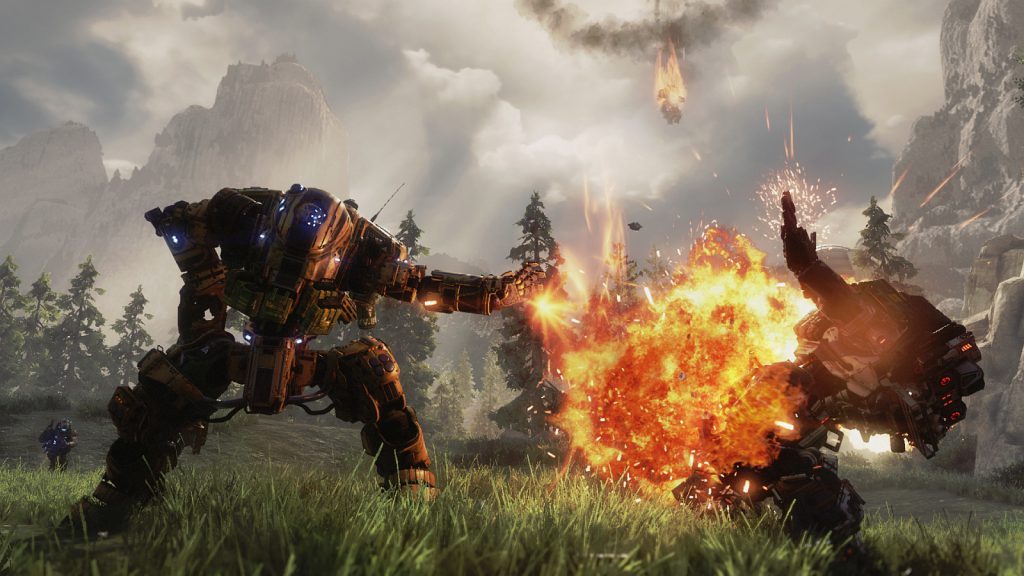
Titanfall 2
TheChirurgeon: Titanfall 2 is the most underrated game of all time. As a franchise generally, Titanfall pulls off the astounding feat of making the on-foot gameplay feel as fun – if not more – than the sections when you’re running around in a giant mech, and the sequel has what I would consider to be legitimately the most incredible single-player game ever put in an FPS. It’s that good. Also the multiplayer is a genuine blast. It’s a travesty more people haven’t played this game because it’s an incredible gem and ahead of its time.
Jonathan Bernhardt: At the very least, the floor here is that it has the best single-player FPS campaign since Half-Life 2. Multiplayer FPS deathmatch isn’t my bag, but the Titanfall franchise’s mech component has always made it more interesting there than most. It’s criminal that Titanfall’s legacy is just, “those games that led to Apex Legends.”
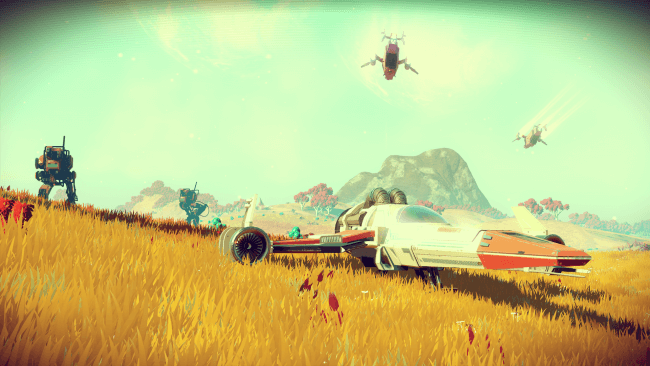
No Man’s Sky
TheChirurgeon: Originally released for the PlayStation 4 in August 2016, the wildly ambitious No Man’s Sky was one of the year’s most anticipated games. Then it was released to mediocre reviews as players finally got their hands on the open-world planetary exploration sim for the first time. It was an interesting mismatch between marketing and product which led a lot of players to be turned off initially. But then over the next eight years No Man’s Sky would continue to build on its launch, adding new features and quests, new gameplay, and new ships, continuing to build one of the largest, most immersive exploration sims ever made.
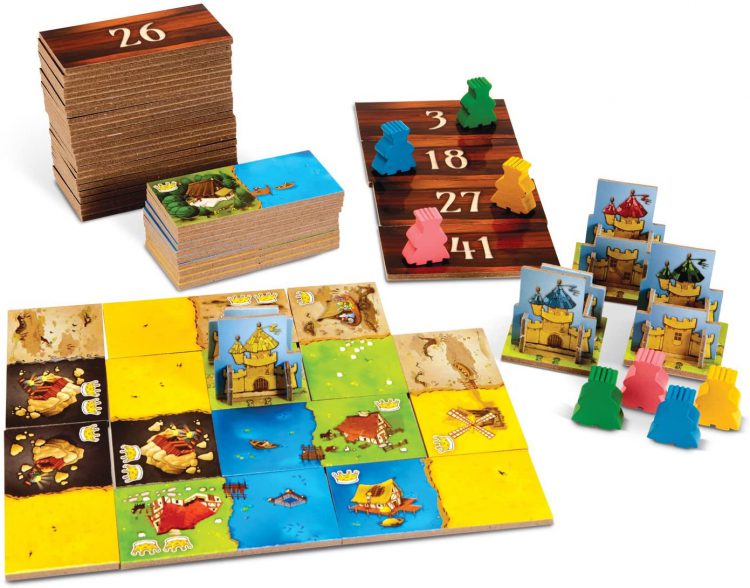
Kingdomino
Raf Cordero: When people say “fun for all ages” they usually mean “bad, but it will distract the kids.” Not Kingdomino. This Spiel des Jahres winner is as fun to play as it is simple to learn. And they aren’t kidding with the advertised 15 minute playtime, either. It’s fun, simple, and fast. Just what you are looking for in a Spiel des Jahres winner. But what is it, exactly?
Kingdomino is a tile-drafting kingdom builder for 2-4 players, ages 8 and up. On your turn, you pick up the tile you selected during your last turn, place it in your kingdom, select a tile for next turn, and that’s it. That’s everything. You repeat that until you’ve gone through the tiles, and that’s the whole game. Okay sure, there are some other rules. After all, there are enough instructions to fill an entire single sheet of paper. Each rectangular tile is made of two squares of terrain like fields, lakes, forests, etc. When you place a tile, the edge of at least one of it’s squares must be touching a matching edge already in your kingdom. For example, if you draw a tile that has a forest and lake, then you need to either place it with its forest touching a forest already in your kingdom, or place it with its lake touching an existing lake. The exception is the castle tile you start with – that one acts as a wildcard for placing tiles.
The tile-drafting mechanic is what holds this game together, and it’s brilliant. Whoever picks up the worst tile this turn gets first dibs on a tile for next turn. But if you pick up the best tile, then next turn you are stuck with the tile that nobody else wanted. This makes the game self-balancing, if your opponent gets the perfect tile, then you can force their hand next turn, giving them a garbage tile that’s worth 0 points or, worse, they can’t even place in their kingdom!
The entire game is a balance. Pick a strong tile now or have a strong next turn. Notice that a tile is weak for you, but take it anyway just to deny it from an opponent who has the perfect spot for it in their kingdom. All this in a game that is small, cheap, easy to learn, and very, very good.

Stardew Valley
TheChirurgeon: A game that’s equal parts farming sim and dating sim, Stardew Valley in many ways feels like a modern update of Harvest Moon, an underappreciated gem on the SNES. Players make a character, inherit a farm from their deceased grandfather, and then set to work tending fields, growing crops, expanding their homestead, and romancing the locals. There’s a host of attached minigames for cooking, cleaning, mining, spelunking, and even fighting monsters, and quests to complete. It’s one of the coziest, most adorable games ever created and basically came out of nowhere in 2016 to dominate casual play and online conversations. It’s not a top pick for best game ever, but it would be in the conversation for a lot of people.
Jonathan Bernhardt: The best Harvest Moon franchise game ever made, in my opinion; your mileage may vary as to whether that’s a difficult bar to clear. Gaming history is full of single-developer titles — check all our pieces on the 1970s in this very series for examples of that — but Stardew Valley is one of the most successful examples of a modern single-developer (or very close to single-developer, as the vast majority of these titles get contractors in for things like localization or specialized platform support) title that we have. Every year or two another one pops up; in 2022, one will even create its own new sub-genre overnight.
Why It Was the Best Year in Gaming
2016 probably doesn’t have a great case for Best Year in Gaming. For me, personally, Sharp Practice and The Walking Dead: All Out War are my two favorite wargames ever, but I can see how they’re a bit more niche than say, fifth edition Warhammer 40k or Age of Sigmar third edition.
Uncharted 4 and Fallout 4 are great games, GOTY candidates in any year, but they’re sequels that are pretty far down the line – not huge innovators, and mostly there to continue or end narratives.
TheChirurgeon: On the other hand, Overwatch is one of the biggest games of all time, and that puts a major competitor in 2016’s corner. Titanfall 2, Stardew Valley, and Pokemon Go are also darkhorse candidates for different reasons, and Kingdomino is a phenomenal entry on the board games side. 2016 is one of those years which looks weak on the surface because of its era, but as you dive in you start to realize how good and important many of its releases were – yeah, there were some big sequels, but also some massive new IPs in the mix.
This article is part of a larger series on the best year in gaming. For more years, click this link. Have any questions or feedback? Drop us a note in the comments below or email us at contact@goonhammer.com.
